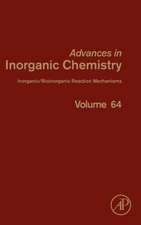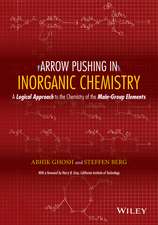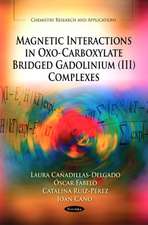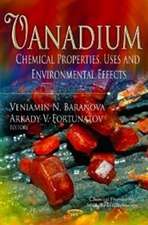Electron Deficient Compounds: Studies in Modern Chemistry
Autor K. Wadeen Limba Engleză Paperback – 29 apr 2012
Preț: 382.75 lei
Nou
Puncte Express: 574
Preț estimativ în valută:
73.24€ • 76.66$ • 60.96£
73.24€ • 76.66$ • 60.96£
Carte tipărită la comandă
Livrare economică 31 martie-14 aprilie
Preluare comenzi: 021 569.72.76
Specificații
ISBN-13: 9781468460568
ISBN-10: 1468460560
Pagini: 212
Ilustrații: VII, 203 p. 192 illus.
Dimensiuni: 152 x 229 x 11 mm
Greutate: 0.29 kg
Ediția:Softcover reprint of the original 1st ed. 1971
Editura: Springer Us
Colecția Springer
Seria Studies in Modern Chemistry
Locul publicării:New York, NY, United States
ISBN-10: 1468460560
Pagini: 212
Ilustrații: VII, 203 p. 192 illus.
Dimensiuni: 152 x 229 x 11 mm
Greutate: 0.29 kg
Ediția:Softcover reprint of the original 1st ed. 1971
Editura: Springer Us
Colecția Springer
Seria Studies in Modern Chemistry
Locul publicării:New York, NY, United States
Public țintă
ResearchCuprins
1 Introduction.- 2 Structure and bonding of diborane.- 2–1 Introduction.- 2–2 Elucidation of the structure of diborane.- 2–3 The bonding in diborane.- References.- Problems.- 3 Structures and bonding of some higher boranes and boron polyhedra.- 3–1 Introduction.- 3–2 The structures and bonding of some higher boranes.- 3–3 Topological treatment of boron hydrides.- 3–4 The structure and bonding of pentaborane(9), B5H9.- 3–5 Some examples of boron polyhedra.- References.- Problems.- 4 The general chemistry of the boron hydrides.- 4–1 Introduction : some thermodynamic data.- 4–2 Some vacuum manipulative techniques.- 4–3 Preparation and interconversions of the boron hydrides.- 4–4 Some reactions of diborane.- 4–5 Some reactions of higher boranes.- References.- Problems.- 5 Associated metal hydrides, alkyls, and aryls.- 5–1 Introduction.- 5–2 Associated metal hydrides.- 5–3 Some mixed hydrides.- 5–4 Some polynuclear hydrogen-bridged transition metal carbonyl hydride complexes.- 5–5 Organo-aluminium compounds.- 5–6 Some reactions of aluminium alkyls.- 5–7 Alkyl or aryl bridges involving gallium, indium, and thallium.- 5–8 Organo-beryllium and -magnesium compounds.- 5–9 Alkali metal alkyls.- 5–10 Some carbide structures.- References.- Problems.- 6 Carboranes.- 6–1 Introduction.- 6–2 The dicarba-closo-dodecaboranes, C2B10H12.- 6–3 Other dicarba-closo-boranes.- 6–4 Dicarba-nido-borane anions and their metal complexes.- 6–5 Species containing one cage carbon atom.- 6–6 Carboranes with more than two cage carbon atoms.- References.- Problems.- 7 Other examples of electron deficient bonding.- 7–1 Introduction.- 7–2 Electron deficient bridged carbonium ions.- 7–3 Transition metal cluster compounds.- 7–4 Transitionmetal-hydrocarbon ?-complexes.- 7–5 Electron deficient sigma bonding in electron rich species 195 References.- Problems.- Answers to Problems.















